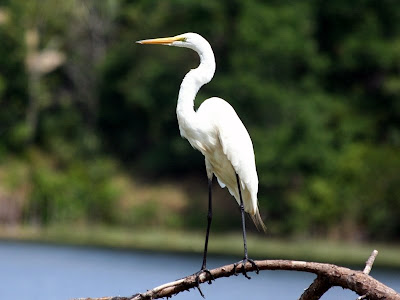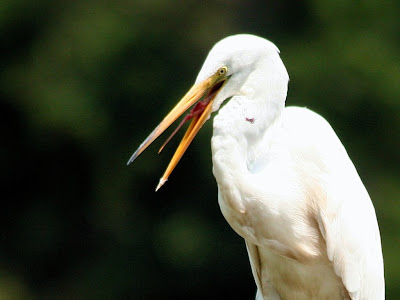
Water birds will wing off at the first sign of danger, so I crept to a new spot to make undeveloped shoreline the background. I can reposition myself more easily with the 300 mm lens because my greater distance from the bird threatens it less. The only problem is that greater magnification means less depth of field. As the egret considered whether it should fly off, glancing over its shoulder for a safe place to land, I lost the necessary clarity for a good shot:

I stopped, waiting for the bird to feel safe and settle back on his perch. Finally, I was rewarded with a shot that I could say I took in the Everglades, even if I really didn't:

As I've said here before, I prefer fauna photographs with the creature showing a little attitude. Eventually, my patience won me this:

For me, what was just a typical bird picture becomes a shot worth viewing with that red tongue and shed feathers showing off some egret sass.



